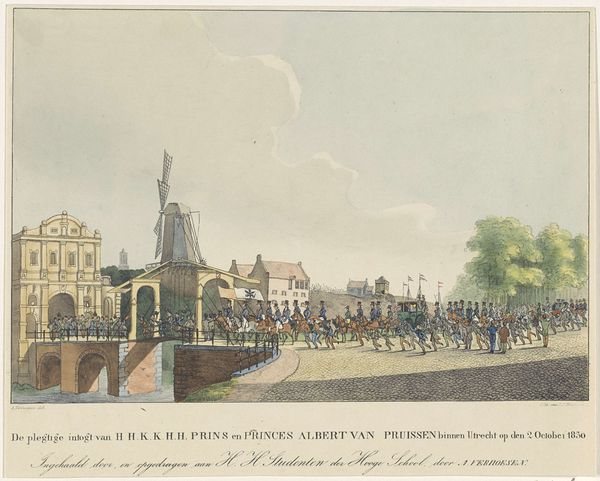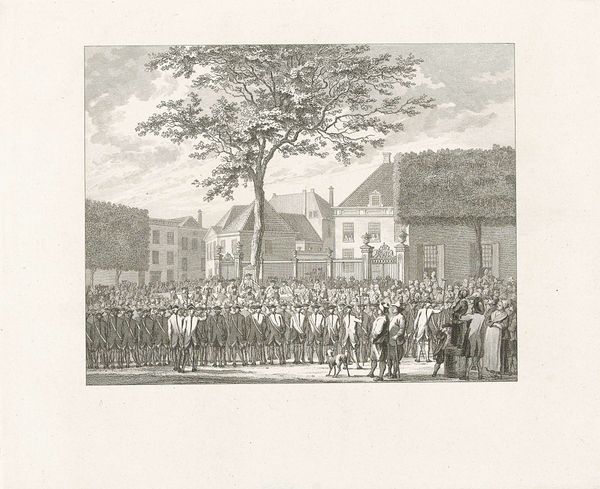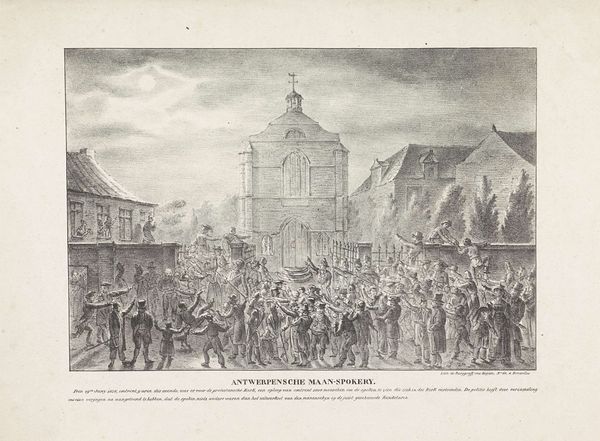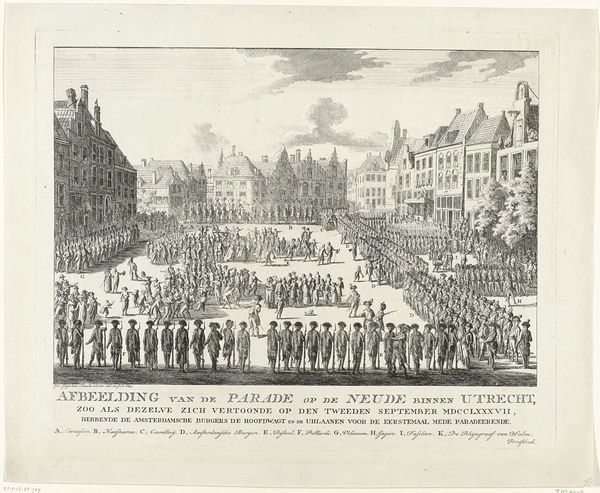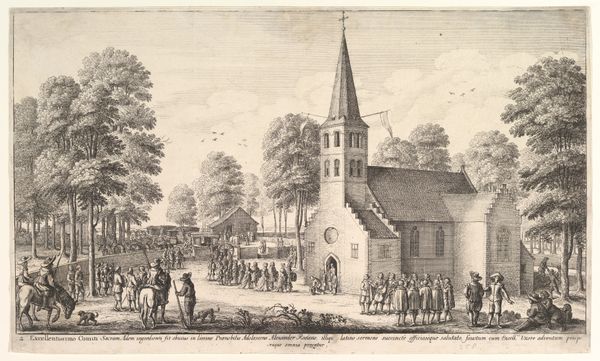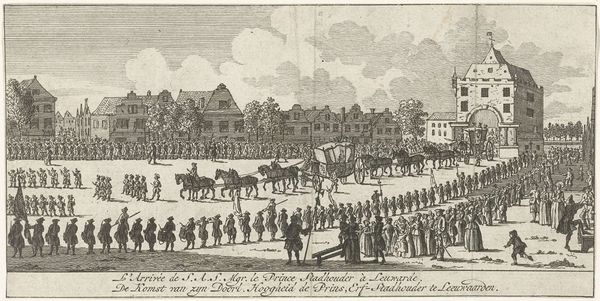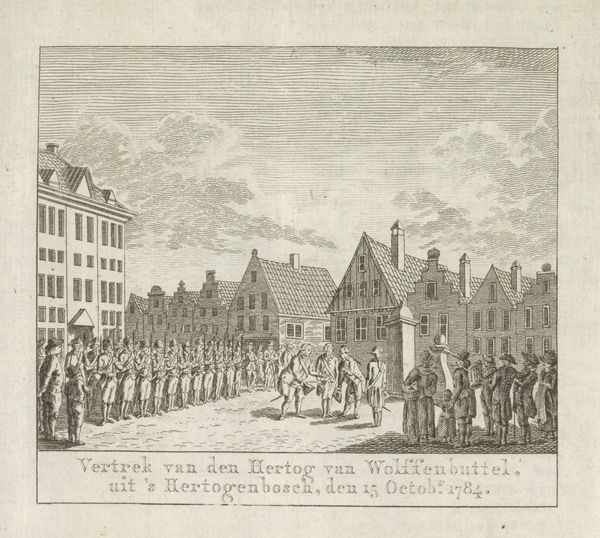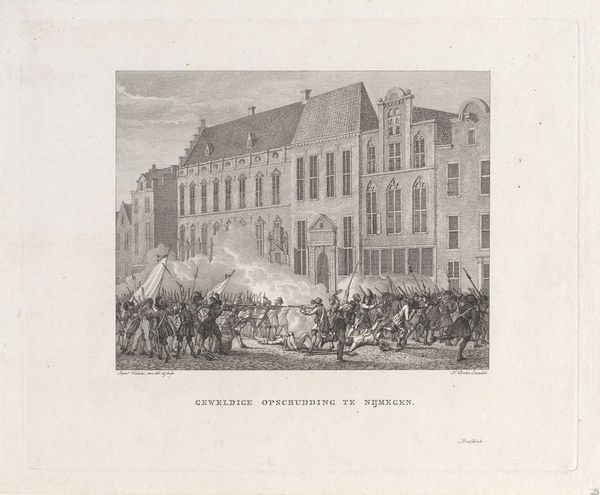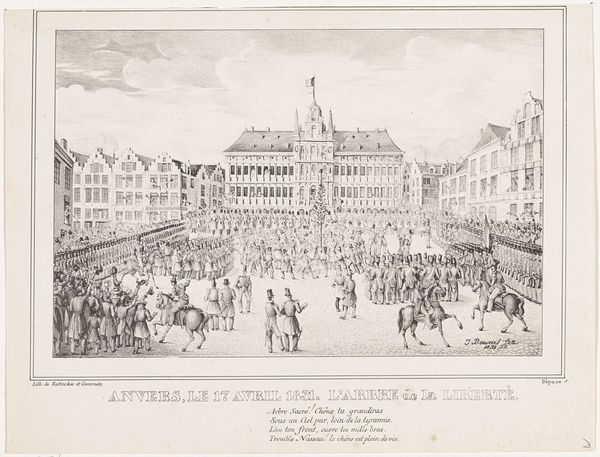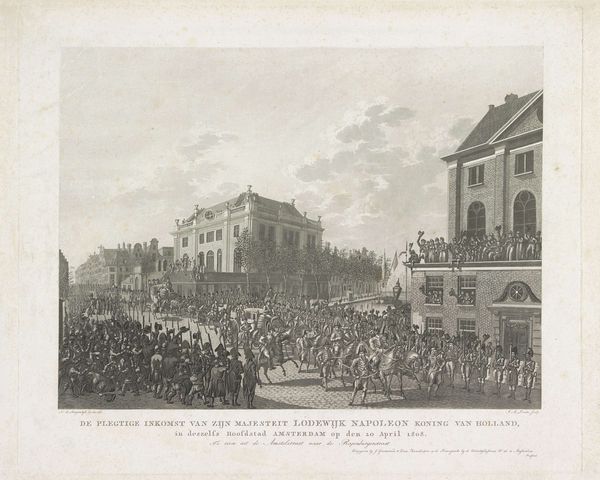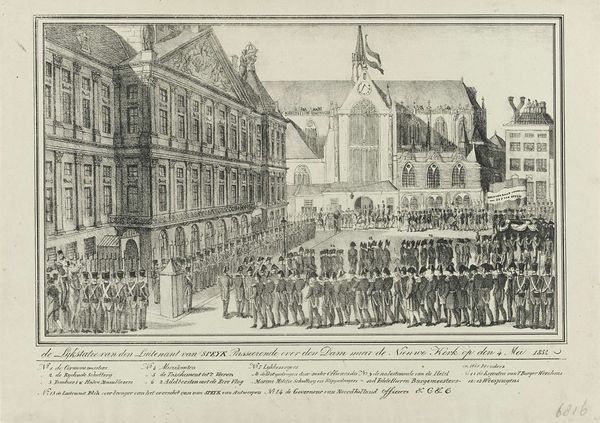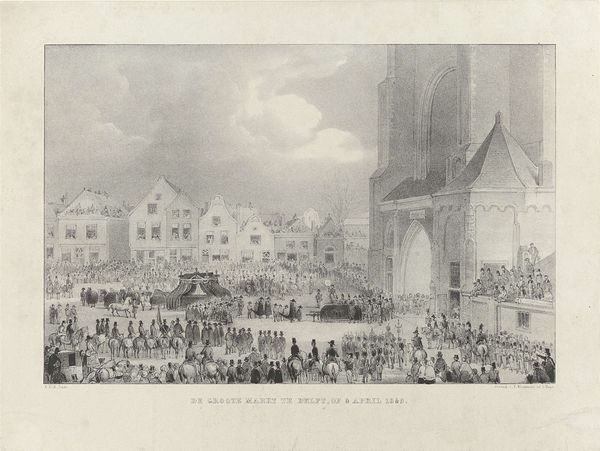
De Terugkomst van het Bataillon Mobile Schuttery van Utrecht, op den 19 Augustus 1834 1834
0:00
0:00
painting, plein-air
#
painting
#
plein-air
#
romanticism
#
cityscape
#
genre-painting
Dimensions: height 309 mm, width 432 mm
Copyright: Rijks Museum: Open Domain
Curator: Let's take a moment to appreciate "The Return of the Mobile Rifle Battalion of Utrecht, August 19, 1834" by Willem Pieter Hoevenaar, currently housed right here in the Rijksmuseum. Editor: My first impression is a feeling of controlled jubilation. The light, the symmetry, the repetition of forms—it creates this sense of order barely containing the celebratory mood. Curator: Absolutely. Consider the historical context: This work encapsulates the Dutch burgher's pride in their civic militias, visualized through the lens of early 19th-century Romanticism, and quite possibly, painted 'en plein air'. The work tells of a time when such battalions were social and political hubs. What of the materials and process capture your attention? Editor: The delicate use of color wash is striking. Notice how the palette unifies the varied textures of the architectural space with the rhythmic patterns of the soldiers in their uniform. It draws the eye into a careful choreography of town life, all focused on this procession. The organization feels almost… geometric. Curator: Yes, and observe the class distinctions represented, made possible by this painting's production and the potential circulation to many audiences! On the one hand, the crisp lines and idealized portrayal elevates the bourgeois ideals. Conversely, it obscures the often less celebrated realities of manual labour involved in civic construction and city life. Editor: I find myself pulled in by the composition. Hoevenaar meticulously balances elements—the soldiers returning in the center, architecture as this strong container on either side, townspeople arranged on left. Look closely; those on top seem separate, and yet together in observation. And just beneath, right in front of them is this little cute dog. The moment feels suspended and complete. Curator: The perspective also directs attention back toward production-- who controls such views? In thinking through that kind of perspective--what is on view and what is occluded--what do you think, Editor, it is that this city portrait gives the viewer and holds back? Editor: It allows you to immerse yourself in what would likely feel at first look like one single moment. But the composition pushes on the reality. This isn't simply recording what happened; it constructs a visual and psychological experience, creating an environment, not an incident. Curator: It truly offers so much to consider – the artist, the medium, the location it depicts – and especially when we contextualize its production. Thanks for those insights! Editor: My pleasure. Thank you for walking us through such a layered composition and a truly generative setting.
Comments
No comments
Be the first to comment and join the conversation on the ultimate creative platform.
